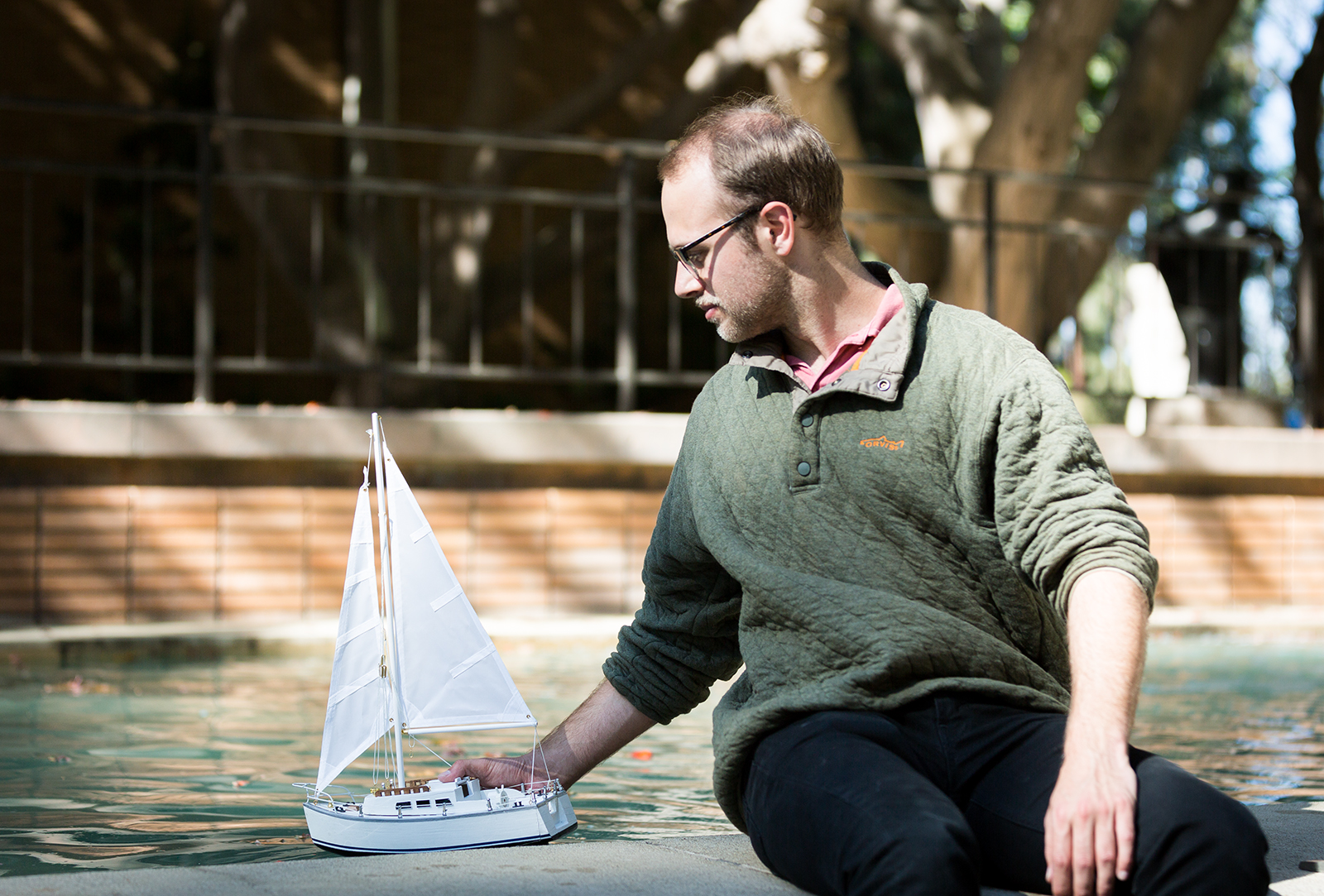Documentary analyzes director’s complex family dynamics with unique flashback style

Graduate documentary production student Jake O’Hare created “Running Aground,” a documentary reenacting his changing family dynamics after learning about the sailing trips his father Scott and his siblings embarked on in the 1970s. O’Hare cast young actors to portray the 1970s versions of his family members.
(Tanmay Shankar/Daily Bruin)
By Claire Locke
April 22, 2019 10:31 p.m.
“Running Aground” navigates the choppy waters of the tense relationships within the director’s family.
Graduate directing student Jake O’Hare was inspired to create a documentary reenacting his changing family dynamics after learning about the sailing trips his father Scott, his aunt Sharon, his uncle Craig and his father’s alcoholic stepfather embarked on in the 1970s. O’Hare centered the film around these trips and the 50-year conflict between his aunt and grandmother. For “Running Aground,” O’Hare interviewed his family about these childhood adventures, casting actors to play 1970s versions of each of his family members.
During their trips, O’Hare said the siblings had to learn to take care of themselves – particularly because their alcoholic stepfather was unreliable. O’Hare said he used the series of trips to stitch together a coming-of-age tale that focuses on self-sufficiency.
“They never really spent time together as a family except when they were forced to go on these wacky, ‘Gilligan’s Island’ type of sailing adventures,” O’Hare said. “Sailing trips were the only place to showcase their relationships.”
Though the documentary is based on the three siblings, O’Hare said the film’s main arc highlights the relationship between his aunt and grandmother. The two initially lived together, but various conflicts caused his grandmother to move out, and their relationship has not been mended in 50 years, O’Hare said. Since the childhood sailing trips were years ago and there was little archival material of the siblings’ childhoods, O’Hare structured the documentary around the series of interviews with each of them. Since half a century had passed, he thought his family members would be willing to speak about their relationship troubles.
“It seemed like the right time to make a film about getting down to the bottom of a couple of fractured relationships in my family,” O’Hare said.
[RELATED: Alumna looks at childhood with a new lens through documentary]
Though O’Hare said he has always had an interest in documentary and narrative filmmaking, he wanted to explore reenactment in a nontraditional way. The scenes taking place in the sailboat were based on factual interviews, but he said they were designed to look fantastical. For example, he said the team played around with constructing half of a boat, used blue fabric for water and maintained color consistency throughout eras, with his aunt wearing red in both the flashbacks and interviews. Additionally, O’Hare shot the scenes using 16 mm film to hearken back to older films.
“People will tell you you’re crazy to shoot on film because most think it’s a dead form,” O’Hare said. “But I wanted a feeling for some moments that we were back in the 1970s.”

(Tanmay Shankar/Daily Bruin)
The flashbacks’ dreamy design elements are meant to mimic real memories and help viewers hone in on the dynamics between characters, O’Hare said. Cinematographer David Marquez, a graduate student, said children remember events differently than adults, and the flashbacks are meant to dramatically mimic childhood memory. Harsh stage lighting along with grainy film rendered the reenactment less realistic, which helped make the difficult topics, such as alcoholism, more digestible for the audience, O’Hare said.
“The way that we stage everything, it looks fake,” Marquez said. “You don’t feel the hardship of the situation as much.”
O’Hare said casting his family members was no easy task. He found it strange and challenging to select a crew that would accurately portray his closest relatives. However, he eventually found 13-year-old Cruz Anthony to portray the 1970s version of his father, Scott. Cruz Anthony’s mother, Linda Anthony, read the script and said her son found the experience of filming the flashback scenes very rewarding. Additionally, she said the role of Scott particularly resonated with Cruz Anthony because both were old souls.
“Scott would take control of the situation and try to help people navigate the boat, because the adult wasn’t really in control,” she said. “Cruz (Anthony) liked the feeling of being the support system for the group.”
[RELATED: Documentary works to destigmatize mental health in Asian-American community]
Creating a documentary that honored the perspectives of each family member while maintaining a story arc was difficult as well, O’Hare said. While interviewing people, he found they tended to remember the same events differently – which presented a challenge when trying to piece together a cohesive narrative.
“To a certain degree, you have to weigh some perspectives over others,” O’Hare said. “This is definitely the most meaningful documentary I’ve ever worked on; that goes without saying.”
O’Hare said he hopes to make a follow-up to this film intended just for his family, exploring more holistically the other perspectives and relationships between his relatives. It would contain more information from the family interviews to paint the broader picture of their evolving family dynamics, and would be longer than the 15-minute cut required for his class.
“The question at the end of the film is if relationships can be mended,” O’Hare said. “I would definitely love to keep filming and see if that question could be answered.”

